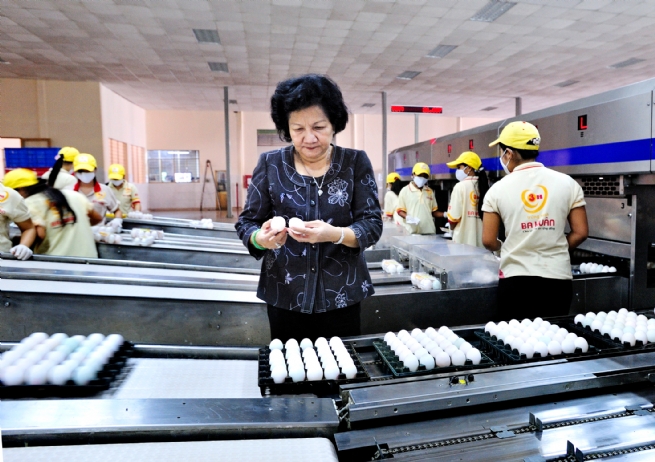10:17:15 AM | 10/25/2019
The Vietnam Report’s survey into enterprises in the food and beverage industry in September 2019 shows that, during 2019-2020, most businesses in the industry will face a number of key challenges including quality of human resources; product quality standards; source of input materials; merger and acquisition (M&A).

Three dominant trends
In a quick survey of businesses in the industry conducted by Vietnam Report in September 2019, up to 66% of the survey respondents were confident that they would grow in revenue and profit in 2019; only 27% believed in growth below 10% and 7% said that business results would not change, compared to 2018.
However, in order to build reputation and conquer domestic and international markets, businesses in the industry also need to capture the movement of major trends in the industry, in order to thoroughly prepare the right product and approach. The research and survey results of Vietnam Report show that there are three main trends emerging in the period of 2019-2020 of the industry.
In Vietnam Report’s interview with experts in the food and beverage industry conducted in September 2019, up to 46% of experts believed in products with organic and natural origin and 36% said that the convenient product for young people would be the main trends of the product lines in the market in the near future.
Besides, it is the rise of beliefs, true values and real stories about corporate products and brands. The experts who participated in the survey of Vietnam Report agreed that consumers not only used the popular products of large manufacturing corporations, but also started to care about the origin of the products and their stories.
In addition, the creativity from Big Data will also strongly influence the trend of food and beverage industry in the future. Big data and artificial intelligence have been mentioned a lot recently, Big Data and AI applications have also been used in some food and beverage businesses in Vietnam. However, the highest potential trend that Big Data brings to the food and beverage industry is the ability to personalize from collected data, share data and support automation, so the product will have the capability to meet the nutritional needs and preferences of each individual. This is likely to become the strongest development trend in the coming years.
Proactive strategies to catch the trend
Experts in the industry said that there are two main difficulties for enterprises in the market, which are the insufficient and unstable source of raw materials for domestic food processing and manufacturing industry. The large proportion of imported raw materials will lead to enterprises not being proactive in quantity, quality and price of raw materials affecting production and business activities; while the foreign investors’ waves of mergers, acquisitions and annexation of domestic enterprises are taking place quite strongly in the industry.
| Food and beverage industry is expected to maintain strong growth momentum until 2020 with an average increase of 10.9%/year thanks to improved incomes and the trend of consuming more high value products dominating consumer preferences. |
In this context, food and beverage businesses must be proactive in strategies to catch the trend and overcome difficulties. In the question of strategic priorities of enterprises in 2020, most businesses said that they would focus on investing in developing production technology, improving product quality, and ensuring food safety (the response rate of about 96%); researching user tastes (about 68%); and investing more in marketing and brand recognition (about 46%).
Obviously, the opportunity for development of food and beverage brands in Vietnam is huge. When foreign enterprises are actively present in Vietnam market, it will open many opportunities for cooperation and investment in production in industrial parks, creating jobs, technology transfer, making products become diversified and convenient. Along with that, the competitiveness is pushed up, thus stimulating domestic enterprises to adapt to innovation to integrate into the common "playing field" of trade.
Quynh Chi